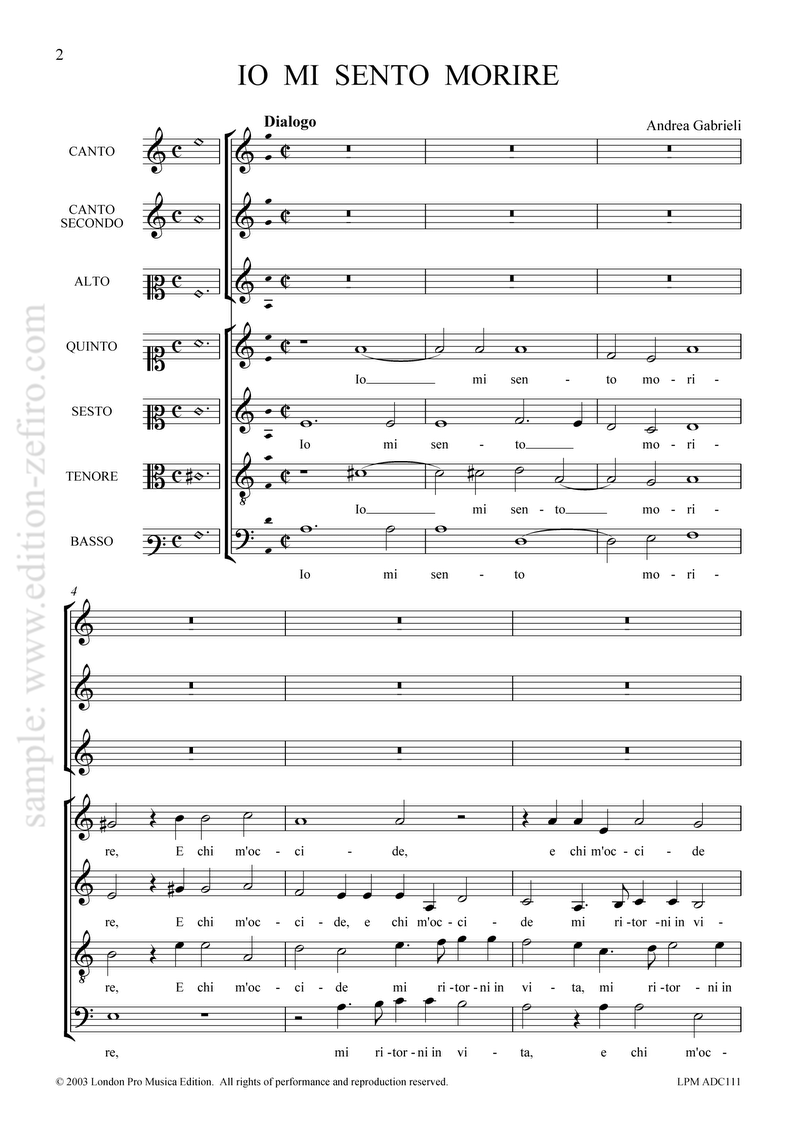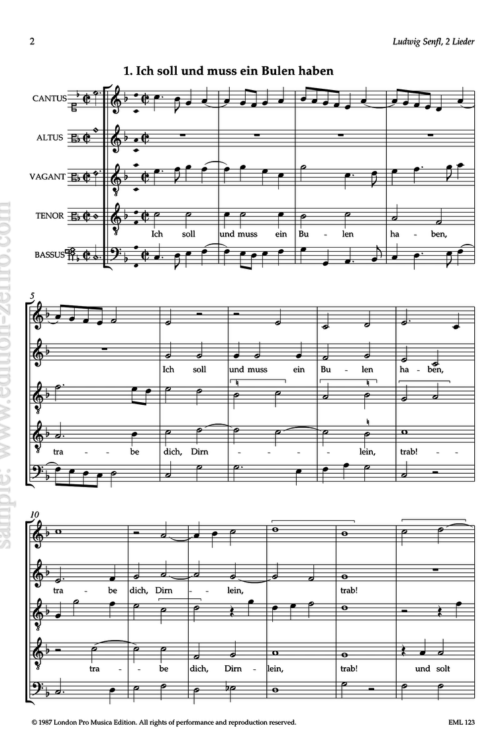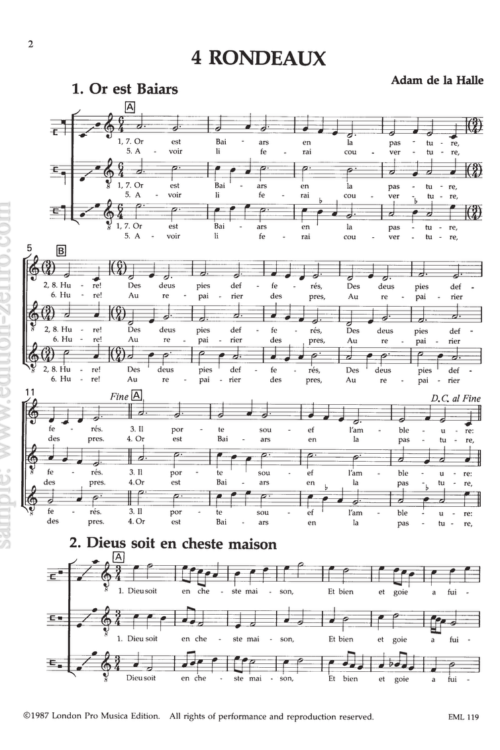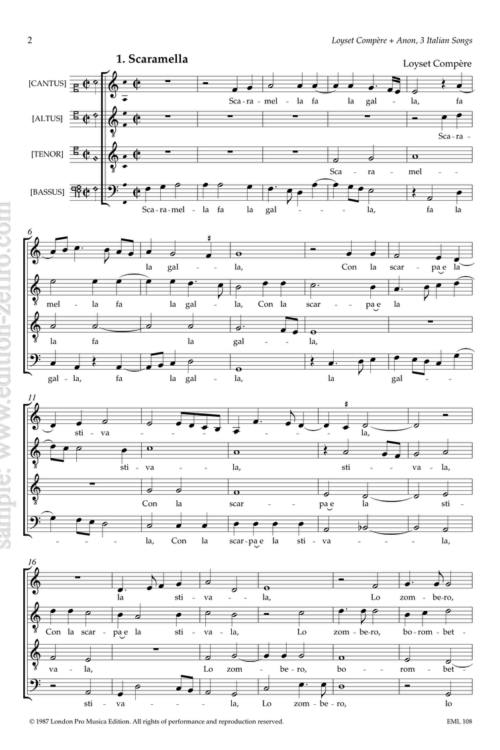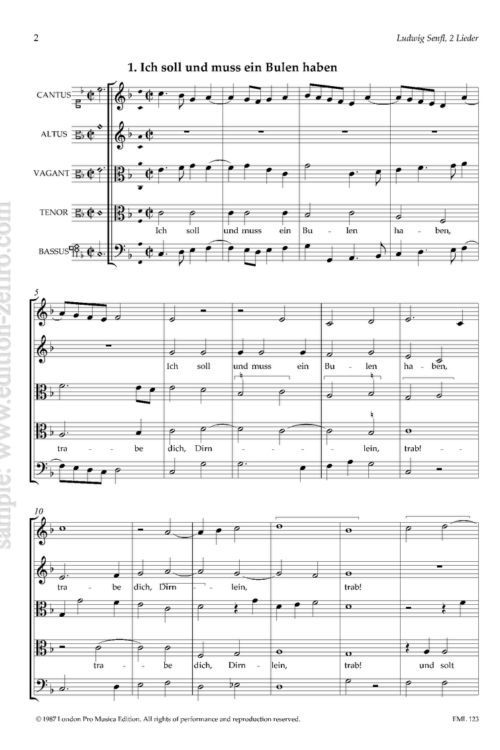Andrea Gabrieli’s Dialogo “Io mi sento morire” is one of three 7-part madrigals printed after the Concerti di Giovanni e Andrea Gabrieli, (Venice 1586). Although the work is clearly antiphonal in character, the division between the groups of voices is not rigid – often the three upper voices are joined by a fourth voice from the lower group, and not always the same one. This has practical implications for performance, suggesting that all the performers would have occupied a single space, rather than being in cori spezzati in different galleries; it was in any case mostly churches that had the galleries for divided choirs, and this piece is not at all suitable for performance in a church, being quite openly erotic.
(Bernard Thomas)
Translation:
(Man:) I can feel myself dying,
Let she who is killing me return me to life.
O my infinite pain!
(Woman:) I would like to depart from life
But he who gives me death is keeping me alive,
Oh, my miserable fate!
(Man:) My heart, who has killed you?
(Woman:) Your glance and your laughter.
And who is killing you, my sweet soul?
(Man:) Your rare beauty and charm.
(Tutti:) Miracle of love,
Adonis without a soul and Cloris without a heart,
And to live is to die.
(Man:) I no longer wish to die.
(Woman:) And I too spurn death.
(Tutti:) Ah, if we must die,
Let us die a quick death, together and content.


